Remote patient monitoring (RPM) has become an essential component in the management of chronic diseases. It harnesses the power of technology to bridge the gap between patients and healthcare providers.
As we move further into 2024, the evolution of RPM systems continues to influence the healthcare landscape. Advanced solutions prioritize patient care and streamline provider workflows.
These systems are designed to collect patient health data remotely. They then analyze and report critical information in real-time to enable timely interventions.
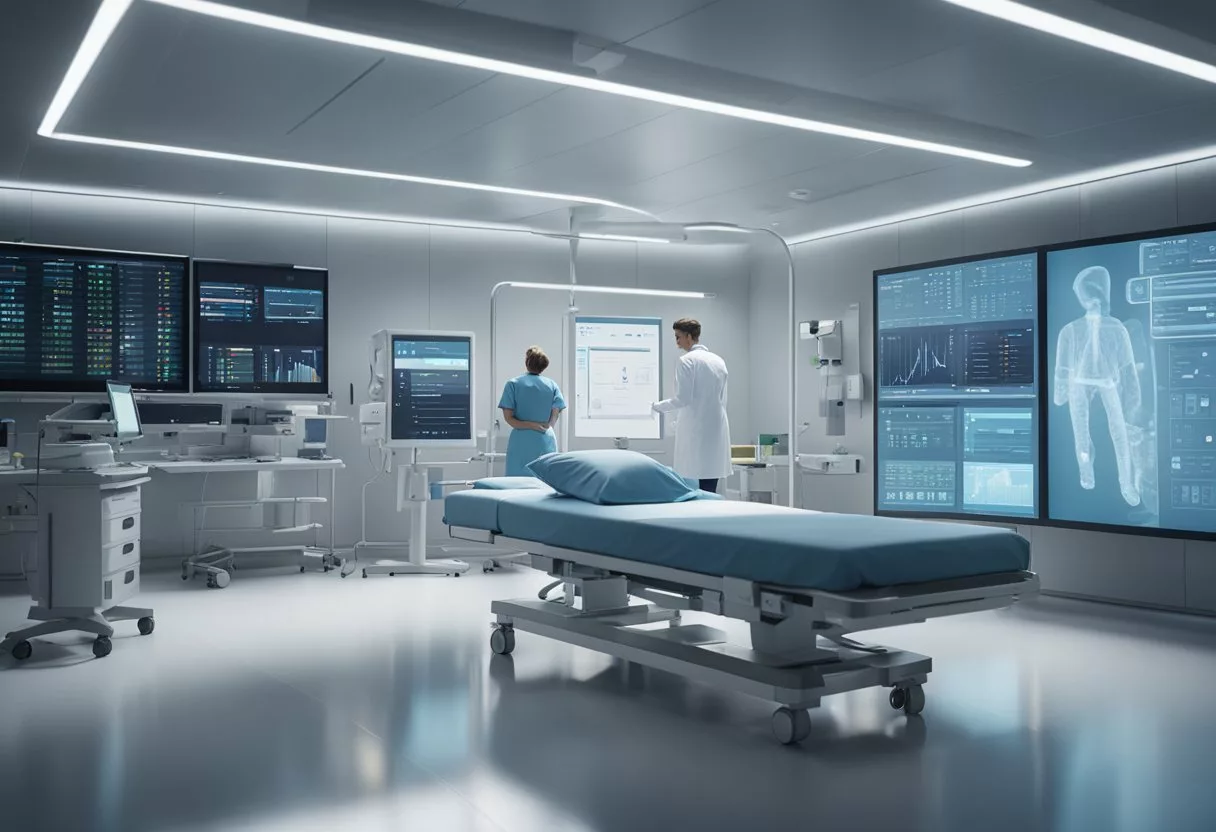
With an increasing elderly population and a rising demand for healthcare services, RPM is becoming more integral to healthcare delivery. This year has witnessed significant strides in integrating RPM into standard healthcare practices, improving outcomes for patients with chronic conditions.
Providers are now better equipped to monitor patient progress, adapt treatment plans, and make informed decisions based on the rich data RPM systems provide.
Key Takeaways
- RPM is advancing healthcare delivery by connecting patients and providers efficiently.
- Integration of RPM into healthcare systems has been instrumental in managing chronic diseases.
- Technologies in RPM continue to evolve, enhancing patient care and operational workflows.
Evolution of Remote Patient Monitoring
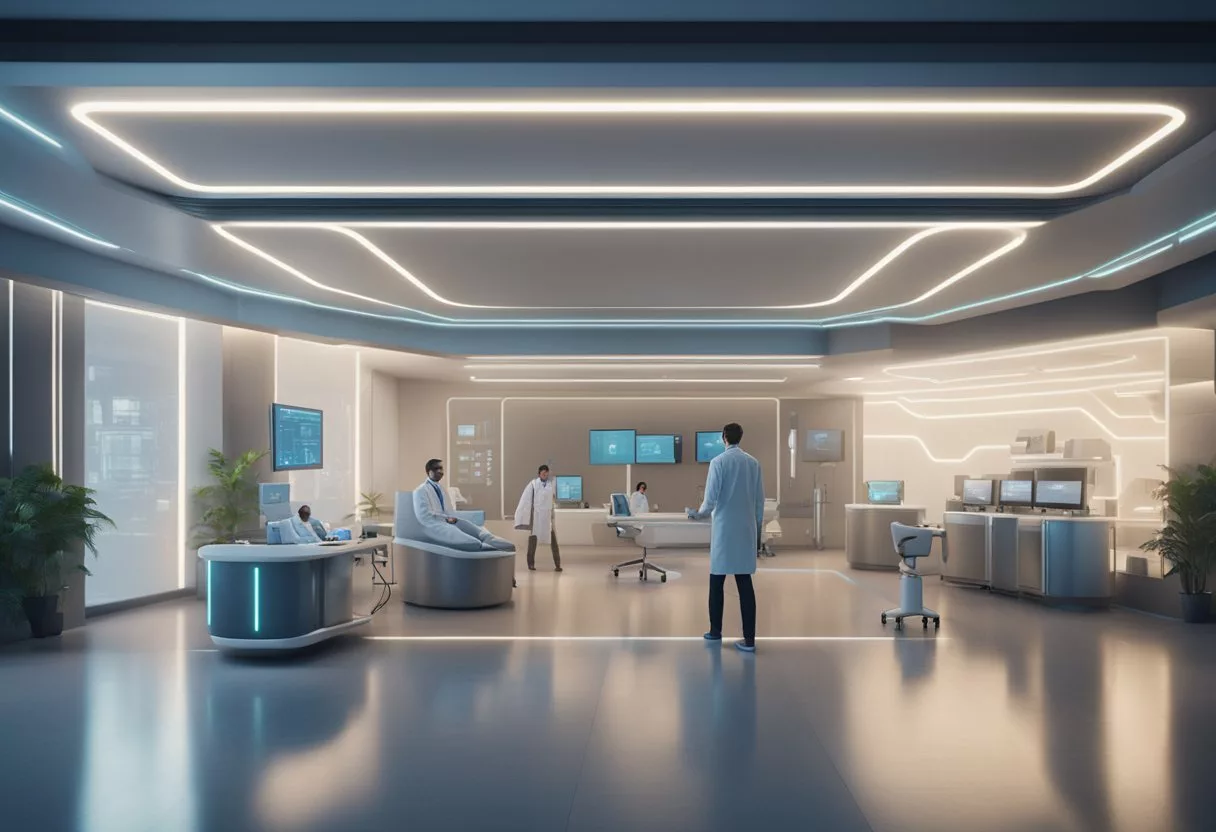
The journey of remote patient monitoring (RPM) reflects significant shifts in technological capabilities and market dynamics. These have shaped current healthcare practices and future expectations.
Historical Overview
Remote patient monitoring has transformed from rudimentary systems to intricate networks capable of comprehensive health management. The inception of RPM can be traced back to when healthcare providers sought to extend care beyond the clinic. They used early telehealth technologies to monitor vital signs remotely. This period was characterized by bulky equipment and limited data transmission capabilities.
In contrast, today’s RPM systems incorporate advanced sensors and data analytics. They have shifted from merely tracking vitals to offering a holistic view of a patient’s health. These advancements have built the foundation for RPM’s expansive role in modern healthcare.
Recent Technological Advancements
Recent years have witnessed a surge in technological advancements that drive RPM efficiency and efficacy. Among them, eight key trends stand out:
- Integration of AI and Machine Learning: This trend propels predictive analytics to anticipate patient deterioration before it becomes critical.
- Improved Wearable Technologies: They offer continuous, non-invasive monitoring with enhanced patient comfort.
- Advanced Data Encryption: This ensures patient data privacy and security during transmission.
- Telecommunication Innovations: They facilitate the real-time transmission of large volumes of health data.
- Interoperability: This trend connects disparate systems to create a seamless healthcare ecosystem.
- Patient-Centered Designs: They make RPM devices more user-friendly, encouraging patient adherence.
- Expansion to Specialized Monitoring: This addresses complex conditions like diabetes and cardiovascular diseases.
- Decentralized Healthcare Delivery: This trend provides remote care as a primary mode of healthcare delivery.
These technological evolutions contribute immensely to RPM, transforming the landscape of healthcare technology on a global scale.
The Growth of the Global RPM Market
The global RPM market is experiencing unprecedented growth, a testament to the increasing demand for healthcare services that are both accessible and cost-effective. According to industry analyses, the market is expanding due to factors such as an aging global population, rising prevalence of chronic diseases, and an increased focus on patient-centric healthcare delivery.
The acceleration of RPM adoption in developing regions, combined with regulatory support from governments worldwide, further catalyzes this market growth. As a result, the RPM sector is becoming an essential component of the healthcare technology revolution, with expectations of continued expansion and innovation.
Key Components of RPM Systems
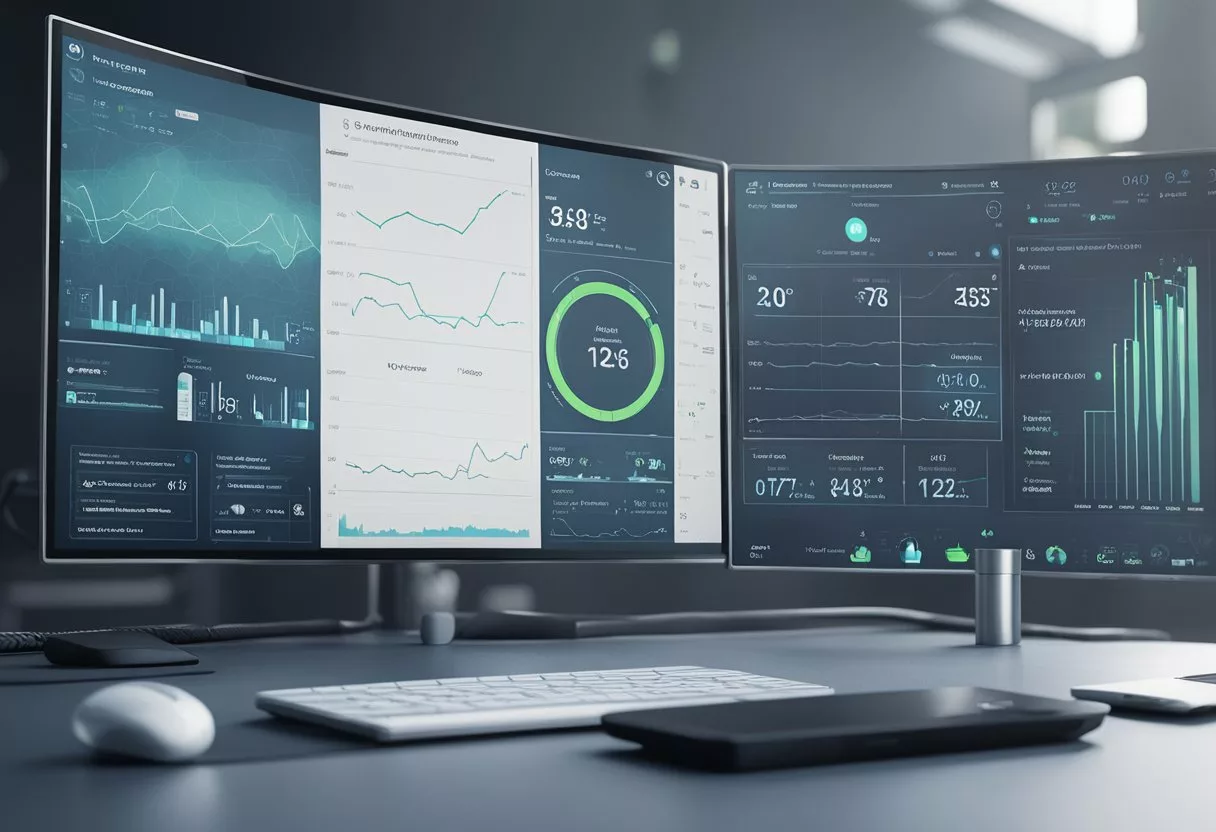
Remote Patient Monitoring (RPM) systems form a critical nexus between patients and healthcare providers. They do this by utilizing advanced devices and sophisticated algorithms to manage and analyze health data.
Devices and Technologies
Several devices play a pivotal role in RPM, ranging from wearable devices to non-invasive sensors. These can measure vitals like heart rate, blood pressure, and glucose levels.
AI-driven technology is at the forefront, enhancing the accuracy and utility of the devices. Utilization of connected devices equipped with Bluetooth capabilities allows for seamless integration into a patient’s daily life, making constant health monitoring feasible.
- Wearable Devices: Such as smartwatches and fitness bands.
- Sensors: Embedded in medical and consumer devices for real-time data.
Data Transmission Methods
Data transmission in RPM systems is a complex yet vital aspect. It ensures the flow of patient health information from the devices to the healthcare professionals.
The use of Bluetooth devices and secure internet protocols are standard methods for sending this sensitive data. They prioritize maintaining the integrity and confidentiality of the patient’s health data.
- Bluetooth: A common method for short-range data transmission.
- Secure Internet Protocols: For encrypted data communication over long distances.
Platforms for Data Analysis
After data is collected and transmitted, platforms for data analysis are essential for distilling the raw data into actionable insights. These platforms often include sophisticated AI and analytics software that can learn from large datasets, improve diagnoses, and predict health events.
This facet of RPM explicitly ties into telemedicine, as it provides a foundation for remote care decisions.
- AI Platforms: They process and interpret complex health data.
- Telemedicine Integration: Ensures that insights are effectively used in patient care.
RPM Integration in Healthcare
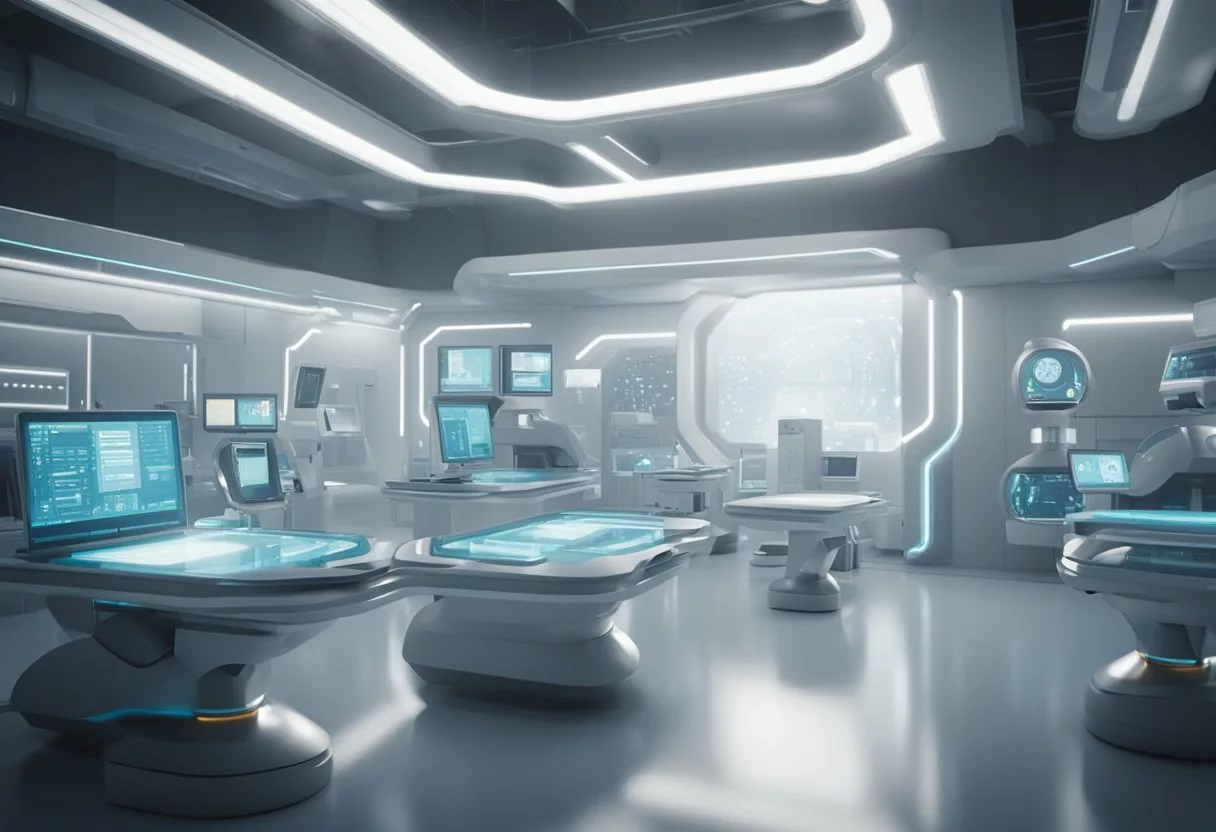
The integration of Remote Patient Monitoring (RPM) into healthcare systems has been transformative. It increases accessibility and aids in the shift towards more proactive and personalized patient care.
Healthcare Provider Adoption
Healthcare providers have increasingly adopted RPM technology to offer better support and improve the management of chronic diseases. Reimbursement policies have played a pivotal role, as policymakers have expanded coverage, making RPM services more financially viable for providers.
The healthcare landscape is witnessing a growing number of healthcare professionals who are trained and equipped to incorporate RPM into regular patient care. This significantly expands the reach of healthcare services.
Telehealth Expansions
The healthcare industry has seen a remarkable expansion in telehealth capabilities, largely driven by the integration of RPM. This development supports the sustainability of healthcare systems by leveraging technology to reduce the need for in-person visits.
The telehealth platform expansions enable the healthcare provider to monitor and manage patient health more effectively. This fosters a centralized virtual care model that benefits both the patient and healthcare system.
Virtual Care Coordination
RPM is a cornerstone of the burgeoning field of virtual care coordination. It connects various elements of a patient’s care team, facilitating seamless communication and cohesive support throughout the healthcare system.
The incorporation of RPM data into electronic health records enhances care coordination efforts, ensuring that patients receive timely and appropriate interventions. This evolution signifies a crucial step towards an integrated healthcare delivery model, capable of coping with the complexities of modern patient care demands.
Benefits of RPM for Patients and Providers
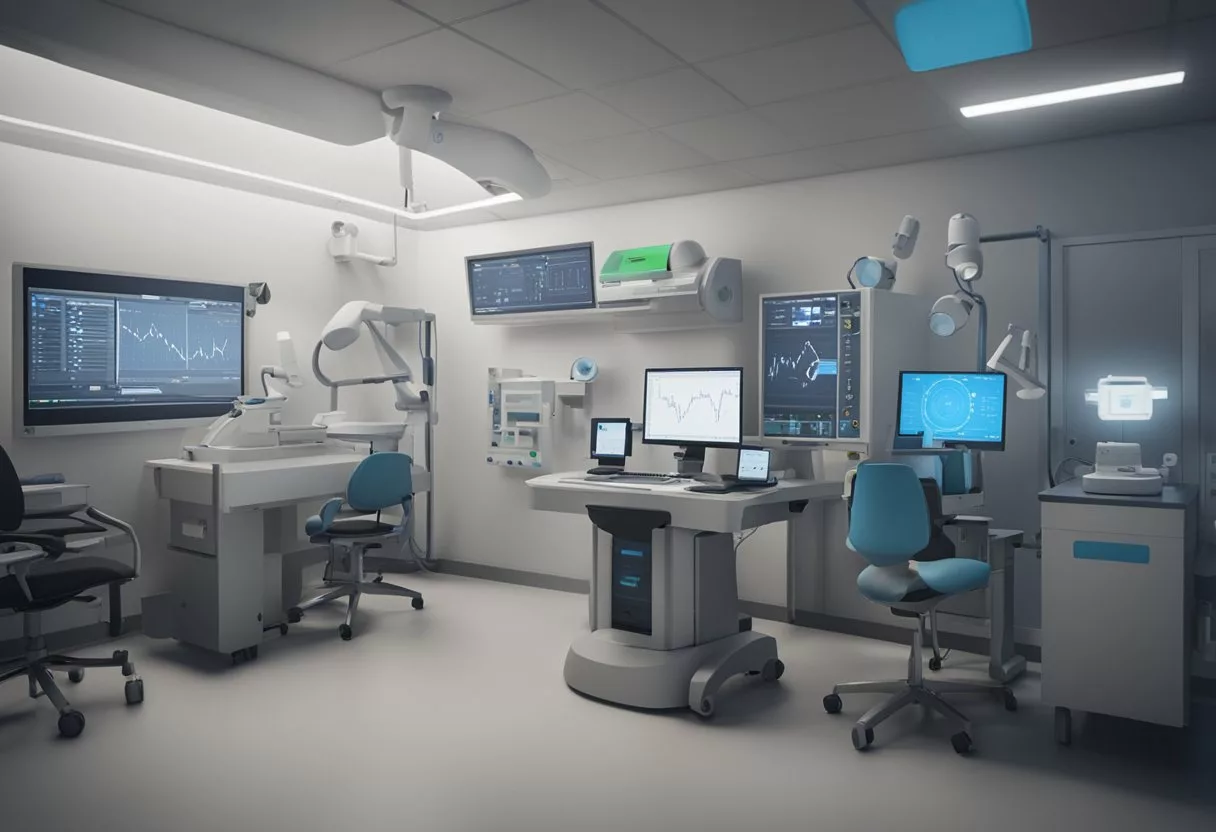
The integration of Remote Patient Monitoring (RPM) within healthcare systems has yielded significant enhancements in patient care and created efficiencies for providers. By leveraging RPM technologies, patient outcomes are improved through better disease management and adherence to treatment, while providers benefit from the streamlining of their workflows, reduction in overhead costs, and favorable reimbursement frameworks.
Improving Patient Outcomes
Patients using RPM often experience heightened vigilance in disease management due to consistent monitoring and prompt intervention. This technology has made it easier for patients to remain adherent to treatment plans, with tools that track vital metrics like blood pressure and glucose levels.
Federally Qualified Health Centers (FQHCs) and other organizations rely on RPM to improve chronic disease management, leading to enhanced patient outcomes. Additionally, RPM facilitates a proactive approach to care, allowing patients and providers to identify and address health issues before they escalate.
Enhancing Physician Efficiency
RPM contributes to physician efficiency by enabling the remote review of patient data, reducing the need for in-person visits. This efficiency not only saves time but also allows physicians to prioritize patients based on severity, optimally directing their attention where it is most needed.
Integrating RPM into practice aligns with value-based care trends. It transforms traditional reactive care models into proactive health management systems. Physicians can now leverage RPM data to make informed decisions, enhancing the quality of care delivered.
Cost Savings and Reimbursement Policies
With a shift towards value-based care, RPM introduces substantial cost savings for both patients and healthcare systems. It reduces hospital readmissions and the need for emergency care, directly impacting Medicare and Medicaid spending.
The Medicare Physician Fee Schedule has been updated to include RPM services, reflecting the shift in reimbursement policies that increasingly cover RPM under various plans. This encourages healthcare providers to adopt RPM models, offering them new revenue streams while concurrently delivering cost-effective patient care.
RPM Impact on Chronic Disease Management
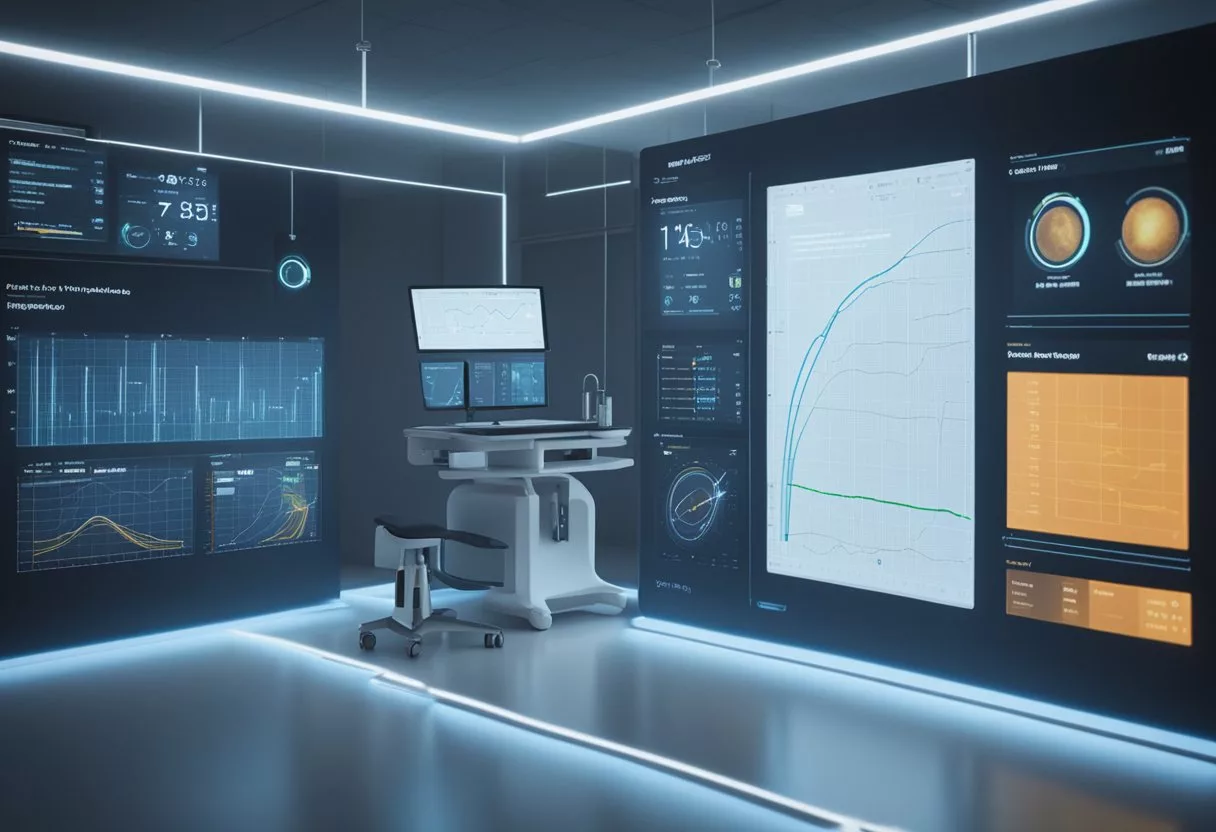
Remote Patient Monitoring (RPM) is revolutionizing the management of chronic diseases. It enhances patient outcomes by providing continuous health tracking and timely interventions for conditions such as diabetes, heart failure, and respiratory issues.
Diabetes Monitoring
RPM technologies have transformed diabetes management, enabling real-time blood glucose tracking and analysis.
According to a systematic review and meta-analysis, RPM systems play a critical role in the management of type 2 diabetes. They provide patients and healthcare providers with the necessary tools to make informed decisions that can stabilize blood glucose levels.
Patient data collected through RPM devices are vital for timely adjustments in insulin therapy and dietary plans.
- Key Metrics Monitored:
- Blood glucose levels
- Insulin doses
- Physical activity
Heart Failure Interventions
RPM is instrumental in managing heart failure, where consistent monitoring can detect early signs of exacerbation.
A pivotal aspect is tracking a patient’s weight, as sudden increases can indicate fluid retention, a common heart failure complication.
The efficacy of RPM in heart failure has been observed with reduced hospital readmissions and improved patient compliance with treatment regimens.
- Critical Interventions Through RPM:
- Daily weight monitoring
- Blood pressure checks
- Symptom reporting
COPD and Hypertension Tracking
For patients with Chronic Obstructive Pulmonary Disease (COPD) and hypertension, RPM provides a means to constantly observe and respond to fluctuations in health status.
Continuous monitoring of blood pressure and oxygen levels assists in preventing emergency situations and adjusting medications more effectively.
RPM has shown potential in reducing mortality and health care utilization, especially in hypertensive patients as seen in this Medicare study.
- Vital Parameters Monitored:
- Blood pressure measurements
- Oxygen saturation
- Breathing patterns
Operational Challenges and Solutions

Advancements in remote patient monitoring (RPM) have brought forth complex operational challenges, particularly concerning data security and the integration of new technologies within existing healthcare frameworks.
Patient Data Security and Privacy
The security and privacy of patient data are paramount in RPM. With the Health Insurance Portability and Accountability Act (HIPAA) setting the standard, healthcare providers must ensure that all electronic health records (EHRs) are rigorously protected from breaches.
- Encryption: Data both at rest and in transit should be encrypted.
- Access Controls: Strictly managed access controls should be implemented, ensuring that only authorized staff have access to sensitive data.
- Regular Audits: Conducting routine security audits can identify potential vulnerabilities.
Healthcare organizations must continually adapt security protocols to address new threats, ensuring that patient privacy is upheld and trust in RPM technology remains strong.
Integration with Existing Systems
Integrating RPM with existing healthcare technology systems is a substantial challenge, primarily due to varying protocols and interfaces.
Seamless integration ensures that staff can efficiently onboard and utilize new RPM tools without disrupting patient care.
- Standardization: Adopting industry standards can reduce compatibility issues.
- Interoperability Assessments: Before integration, an evaluation of the RPM technology’s interoperability with current systems should be performed.
- Training Programs: Comprehensive onboarding and training programs for staff can bridge the gap between new RPM tools and existing workflows.
It’s crucial for healthcare providers to carefully manage the integration process, maintaining the continuity of care while leveraging the benefits of modern RPM technologies.
Future Trends in RPM

The landscape of Remote Patient Monitoring (RPM) is rapidly evolving, influenced significantly by advancements in AI and wearable technologies, as well as a growing emphasis on individualized patient care.
Artificial Intelligence and Predictive Analytics
The integration of Artificial Intelligence (AI) in RPM systems is poised to enhance the effectiveness of health interventions by utilizing predictive analytics for early detection of potential health issues.
These systems process real-time data from various sources, including heart rate, temperature, and other vital signs, to create personalized care plans.
Emerging trends indicate that AI algorithms will advance to the point where they can predict exacerbations in chronic illnesses, potentially reducing hospital readmission rates.
Wearable Tech and Continuous Monitoring
Wearable tech has become a cornerstone of RPM, facilitating continuous monitoring of patients’ health status.
The future will likely see a surge in sophisticated wearables that not only track basic vitals but also monitor a patient’s biomechanical movements and environmental data.
This allows for more comprehensive health insights, making personalized patient care more accessible and continuous.
Personalized and Patient-Centric Care Approaches
A shift toward patient-centric care approaches within RPM addresses health equity by tailoring healthcare to individual needs.
Moving forward, personalized care plans facilitated by RPM will drive patient engagement, ultimately leading to better health outcomes.
Customized interventions that consider a patient’s unique health profile are anticipated to become the standard, ensuring that all individuals have access to optimal healthcare services.
RPM Role in Healthcare Equity and Accessibility
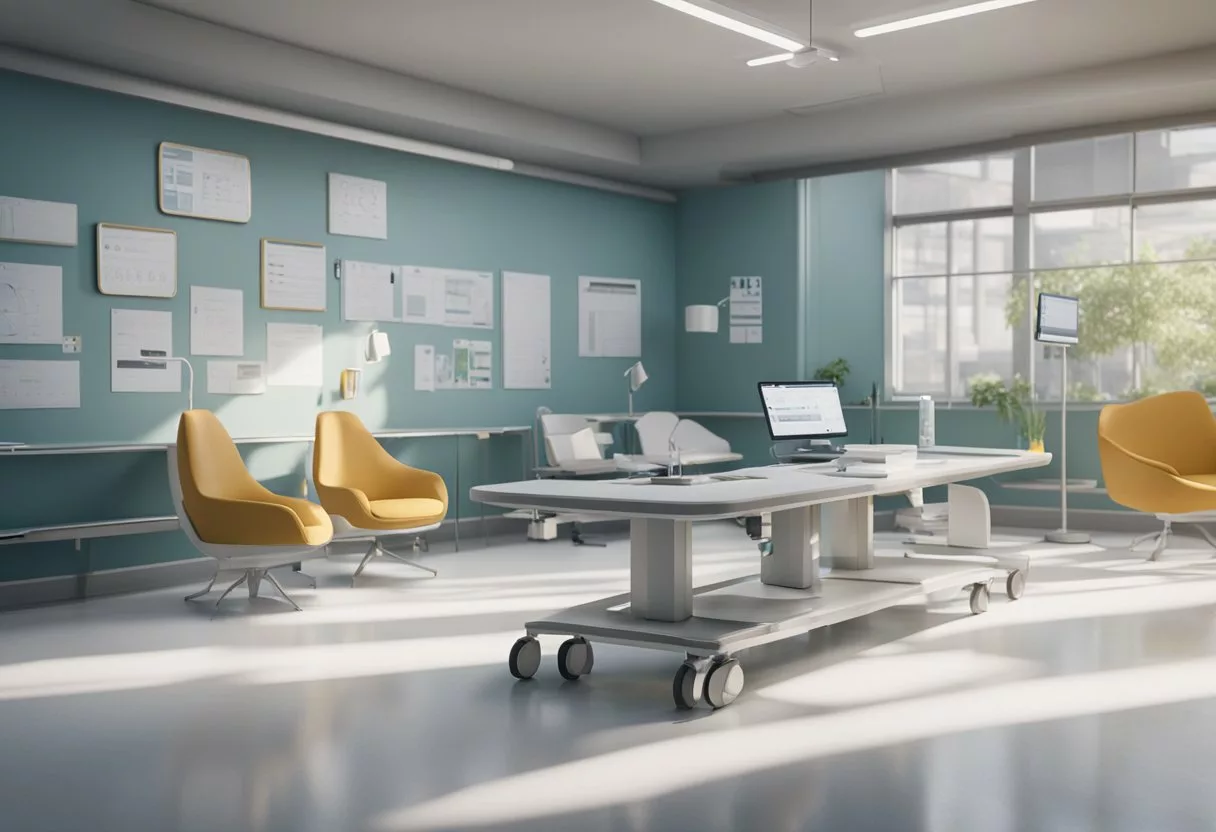
Remote Patient Monitoring (RPM) is reshaping the delivery of healthcare by making it more inclusive and equitable. This technology bridges gaps in healthcare by providing cost-effective services, particularly to underserved patient populations.
Expanding Access to Underserved Populations
With RPM, geographical barriers that once limited healthcare access are being dismantled.
Patients in rural and remote areas now have the opportunity to receive monitoring and care that they previously could not access due to distance from medical facilities.
For example, patients with chronic conditions such as diabetes or heart disease can have their health data monitored in real time, allowing for timely interventions and ongoing management without the need for frequent travel.
- Cost-effectiveness of RPM presents a significant benefit for both patients and healthcare providers.
RPM’s Influence on Health Equity
Health equity is fundamentally about ensuring that everyone has a fair and just opportunity to attain their highest level of health.
- Personalized care: Tailoring healthcare to individual needs regardless of socioeconomic status.
- Data integration: Facilitating the integration of patient data into electronic health records enhances the continuity of care and enables healthcare providers to make informed decisions.
- RPM can reduce hospital readmission rates, a crucial metric in assessing quality and equity in healthcare delivery.
- By giving patients the tools to participate actively in their care, RPM empowers them with greater control and understanding of their health conditions. This self-management support is vital for long-term positive health outcomes, particularly in underserved communities.
Industry Insights and Market Dynamics

The landscape of remote patient monitoring (RPM) is characterized by rapid technological advancements and shifting regulations that actively reshape how healthcare providers and patients interact.
RPM Vendors and the Competitive Landscape
The RPM market is experiencing a significant transformation powered by technological innovation and an influx of vendors.
Key players range from established healthcare technology companies to specialized startups, each vying for a share of a growing market.
These companies are not only expanding hardware options, such as wearable health monitors, but also developing sophisticated platforms that integrate patient data for improved healthcare delivery.
Highly competitive, the market demands that RPM vendors differentiate themselves through unique features, interoperability, and ease of use.
Specialty clinics and physician practices have an expanding array of vendors to choose from, which allows them to tailor RPM services to their specific needs.
The competitive landscape is also driving collaborations and mergers, consolidating expertise and resources to streamline patient care and data management.
Regulatory Changes and Their Effects
RPM applications are subject to a complex regulatory landscape that is adapting alongside technological progress.
Governments and regulatory bodies are working to establish frameworks that ensure patient safety, data privacy, and efficacy of RPM technologies.
Recent changes in regulation have expanded reimbursement options, making RPM solutions more accessible for specialty clinics and physician practices.
These changes incentivize the adoption of RPM, as providers can be compensated for remote care in ways that were not previously possible.
Regulatory evolution is crucial for maintaining a balance between innovation and patient security. As new policies are developed, they have the potential to impact the rate of RPM adoption and the ways in which healthcare services can be delivered remotely.
Frequently Asked Questions
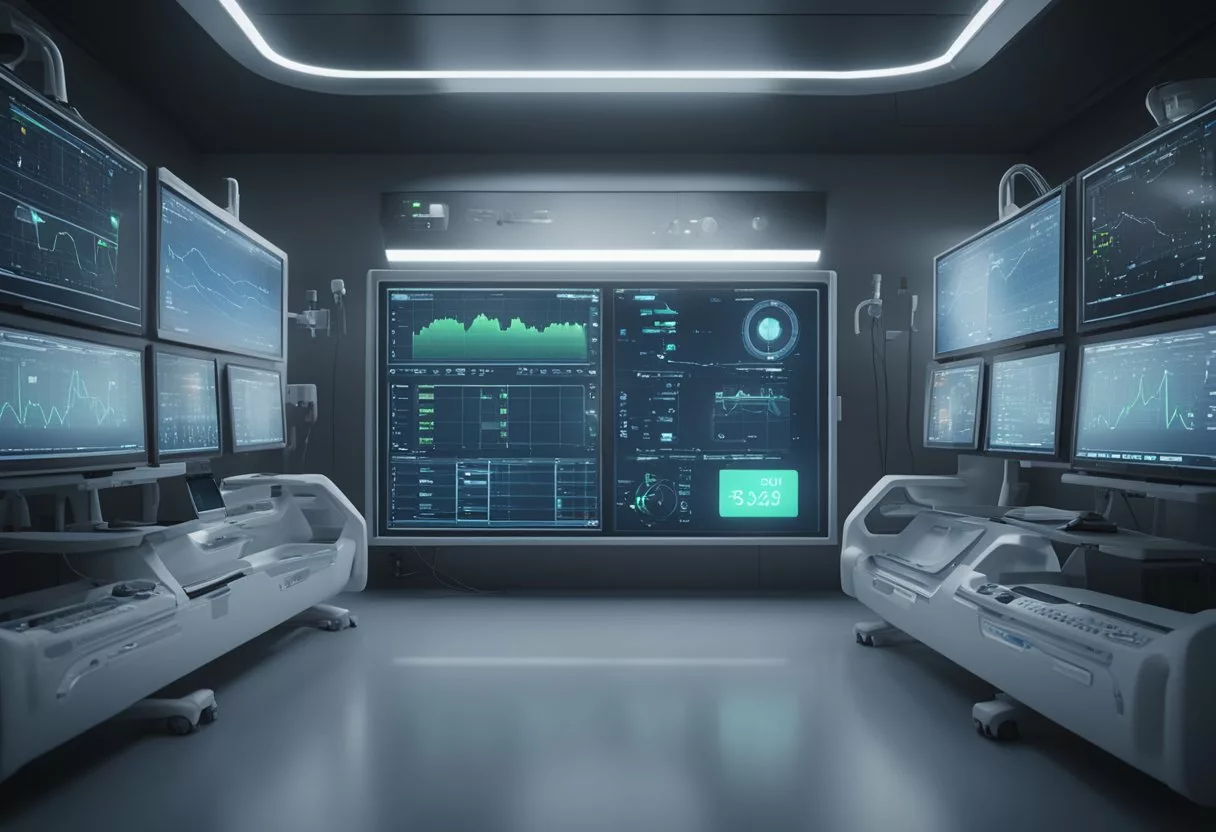
Advancements in technology, market growth, and the integration of artificial intelligence are reshaping remote patient monitoring in 2024. Regulatory updates are also influencing the delivery of these services, while the impact on patient outcomes is becoming more evident despite existing adoption barriers.
How is remote patient monitoring technology advancing in 2024?
In 2024, remote patient monitoring technology has seen significant advancements. Advanced wearable medical devices are now integrated to offer transformative remote health monitoring capabilities. These devices provide real-time tracking of numerous health markers, which are essential for patient care optimization.
What are the projected growth trends for the remote patient monitoring market through 2024?
The remote patient monitoring market is undergoing considerable growth. Documentation of these growth trends reveals an increasing demand for telemedicine and remote care. This suggests a robust expansion trajectory up to and beyond 2024.
What role does artificial intelligence play in remote patient monitoring as of 2024?
As of 2024, artificial intelligence plays a crucial role in enhancing the efficiency and efficacy of remote patient monitoring. AI algorithms are used for pattern recognition, predictive analytics, and facilitating personalized care plans. These all contribute to more proactive and precise patient management.
Which regulatory changes are impacting remote patient monitoring services this year?
Regulatory changes in 2024 continue to impact remote patient monitoring services. Temporary telehealth flexibilities have been extended for Medicare, affecting service delivery and reimbursement models. These changes are crafted to support the growing use of telehealth solutions and to further understand utilization patterns.
How are patient outcomes affected by the latest remote patient monitoring solutions?
The latest remote patient monitoring solutions have been documented to reduce healthcare use and improve the quality of care in patients with chronic conditions like heart failure. These remote health interventions have been associated with fewer hospital visits and better management of patient health.
What are the barriers to wider adoption of remote patient monitoring systems?
Several barriers hinder the widespread adoption of remote patient monitoring systems. Challenges include issues with patient and provider technology literacy. Also, data privacy concerns and the necessity for integration with existing healthcare infrastructures.